Carl A. Kuhrmeyer: U of M "Jammed" With GIs
The G.I. Bill provided returning servicemen and women with unprecedented access to higher education. As a result, college campuses across the country were bursting at the seams with record enrollments. Carl Kuhrmeyer was too young to serve in the war, but he remembered the influx of "non-traditional" students and life on the crowded University of Minnesota Twin Cities campus when he enrolled in September 1945. Mr. Kuhrmeyer was interviewed by oral historian James E. Fogerty for the Minnesota's Greatest Generation project in 2006.
Audio
Transcript
JF: You were in college when the war ended or you were about to start college.
CK: The war ended in August 1945 and I started in September. But, as a result of that, there were a number of G.I. veterans that came back at that point and also started college in 1945. That was the bulge in the college enrollment through 1945, 1946, and 1947. We had many, many thousands of G.I.s coming back on the G.I. Bill and, as a result, we had a large class of engineers in that period. They were all older than me by at least three or four years. I was only seventeen when I started college. They were all, of course, in their early twenties, twenty-one, twenty-two, twenty-three, so it was a different situation. I had to work a little harder because they were really pretty serious about school. They were married, a lot of them, and had a family, and they really wanted to get out as quickly as they could.
JF: Out into the workforce.
CK: So everybody tried to graduate in four years, and that's not the way it is today. Now a lot of them don't graduate in five years or six years. But back then they all took pretty heavy classes. ...The real impact was all those G.I.s coming back from the service and going to college under the G.I. Bill.
JF: What was it like on campus at that time?
CK: It was jammed. We had classes in temporary buildings. We had trailers set up. We had huge classes, in some cases; 200, 300 people in a lecture class. Even our English classes were thirty-five and forty, forty-five, fifty, which was not the best, but that’s the way we had to do it. The enrollment at the university just skyrocketed in those years.
JF: It must have been an interesting social setting in some ways, because so many of your classmates were older than you, had families, and really had a different mindset almost.
CK: Yes. I didn't really get into any social activities at the "U," other than our fraternity. I joined the Zeta Psi Fraternity in my sophomore year out there. I joined Zeta Psi because I had an uncle by the name of Henry Kuhrmeyer, who was also a Zete, and he graduated in 1917, back during World War I. I did join the fraternity, but, even in that fraternity, they were almost all older than me in the first couple years. Then, when I became a senior, there were some younger fellows coming in. But when I was a sophomore and a junior, they were all older than me by quite a bit.
JF: Did you continue to work on weekends and things like that?
CK: I did. I worked at the grocery store on the weekends. Then, in the summer, I had different summer jobs. I worked in a foundry and I worked different places through the summer in order to make more money. Because I wasn't on the G.I. Bill, I had to pay for everything myself – along with help from my family.
JF: There are all sorts of different branches of engineering. How soon did you begin to figure out which one you wanted?
CK: Well, I really liked mechanical engineering right from the start. Of course, in engineering, you have to take chemistry and you have to study electricity and you have to take physics. You get a smattering of the other engineering degrees, but I really liked mechanical the best because it's a question of assembly lines, factories, efficiencies, quality. Those are the kinds of things I like more than just chemistry or just electronics. I like to work with people. I’ve always liked to work with people. So I felt that mechanical engineering did more working with people in factory-type settings than any other of the engineering branches.
JF: When you graduated, what was the job market like?
CK: It was not good. I graduated in 1949 in June, and it was not good. I did get a job as a heating, ventilating, and air conditioning engineer over in Minneapolis in the Foshay Tower for Magney, Tussler & Setter. They were architects and engineers. I worked there for about a year and a half before joining 3M. I did that because this was definitely right down my line of engineering, mechanical engineering. I enjoyed that, but I was on the drafting board doing a lot of design work and I didn’t have much contact with people, except the people right around me in the office. So I came to the conclusion that that really wasn't what I wanted to do the rest of my life. That's when I applied to 3M. I always kept 3M in the back of my mind, because I was born and raised so close to the main plant on the east side of St. Paul. But I didn't apply until I had this job under my belt because I wanted to have some experience before I applied to 3M. That’s what I did. I was hired in April of 1951.
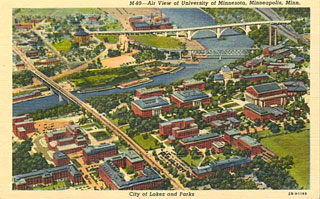

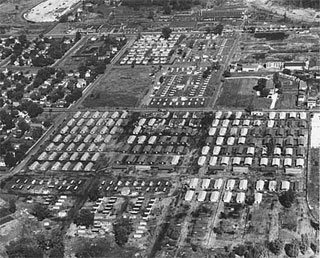
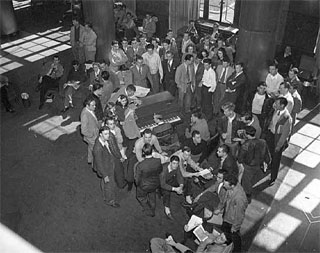
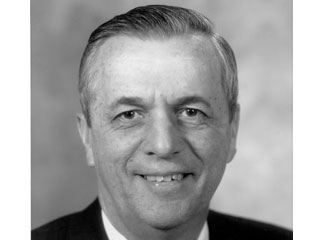
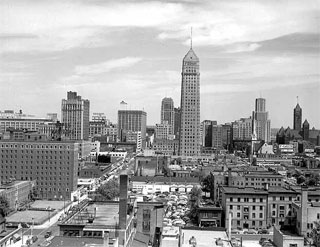
Source
Kuhrmeyer, Carl A.; James E. Fogerty, Interviewer, Minnesota Historical Society: Minnesota's Greatest Generation Oral History Project, 2006.


